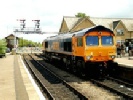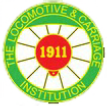Archive Section




A Lecture by Karl Watts, MD of Rail Motive
Tuesday 1st October 2024, Palestra House
Written by John Doyle
Karl was enthusiastically welcomed as an old friend of the Institution who has spoken to us on at least two other occasions in the past few years. Continuing an extensive and illustrious career in the railway industry Karl is now Managing Director of Rail Motive Ltd.
His talk was about the future of locomotives in this country. He said that while passenger rolling stock had received much attention in recent years the future of locomotives had been largely neglected. He noted that the use of locomotive haulage on scheduled passenger train services had reduced significantly, citing only Transport for Wales, Chiltern,GWR and Caledonian sleepers.
Largely confined to non passenger work locomotives were required for a wide and varied range of duties from express freight, to heavy haul and infrastructure monitoring. Currently about 700 locomotives are in mainline use from a wide variety of classes many being very elderly. The most numerous being the 400 or so class 66 locos and the most modern being the 10 class 99 locos about to enter service.
On an assumed life of 30 years replacement of the fleet will be necessary in the next several years. Karl cited many factors affecting the situation and focused on a couple.
Decarbonisation is a looming goal with a deadline of 2050 for the country to achieve net zero and for diesel traction on the railway to have ceased by 2040.
In addition the aim of increasing rail freight traffic by 75% by 2050 was announced by a previous Transport Minister.
The laws of physics make electric locomotives inherently superior to diesel locomotives. Karl espoused the virtues of electric locomotives over diesel traction but was pessimistic about the realistic prospects of significant expansion of the electrification infrastructure.
His analysis points to the use of hybrid locomotives employing electric and battery traction supplemented by the continued use of more modern diesel locomotives powered by “clean” rather than diesel fuel.
The talk was very well received and prompted several questions from the audience.